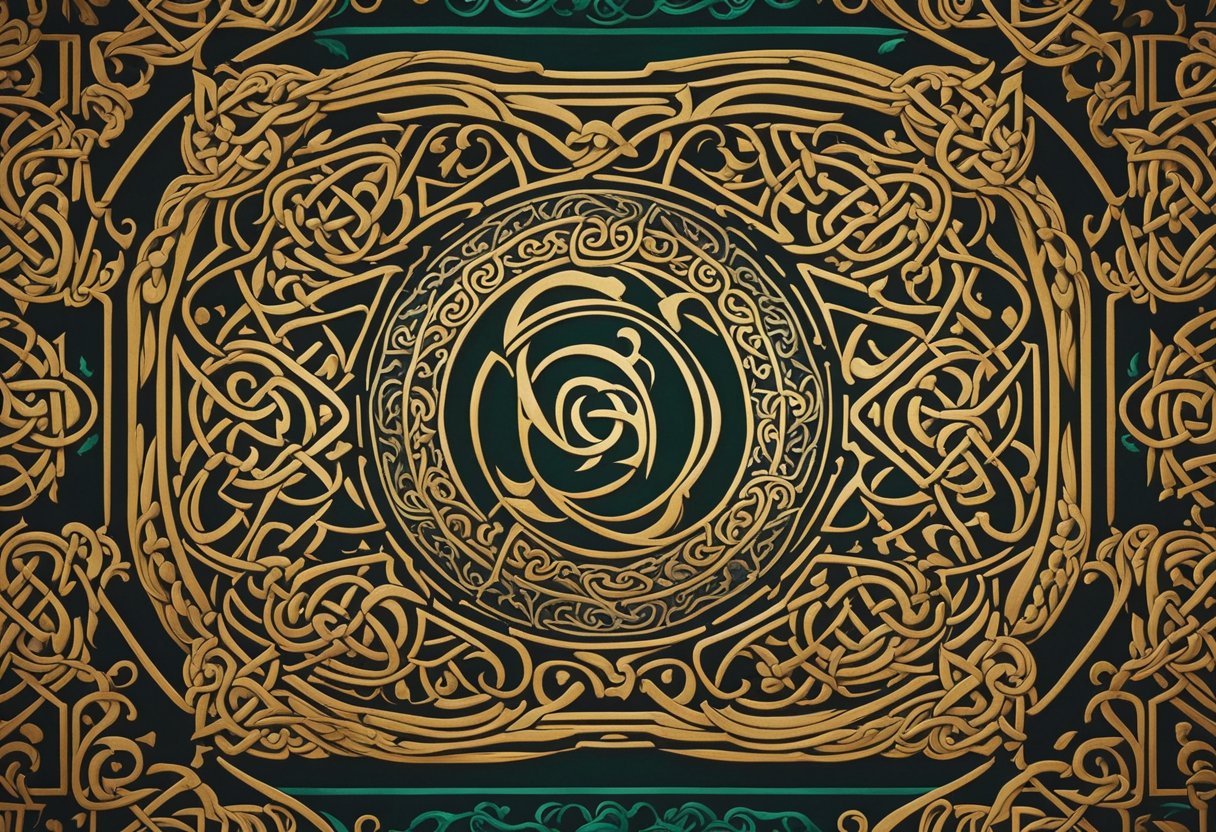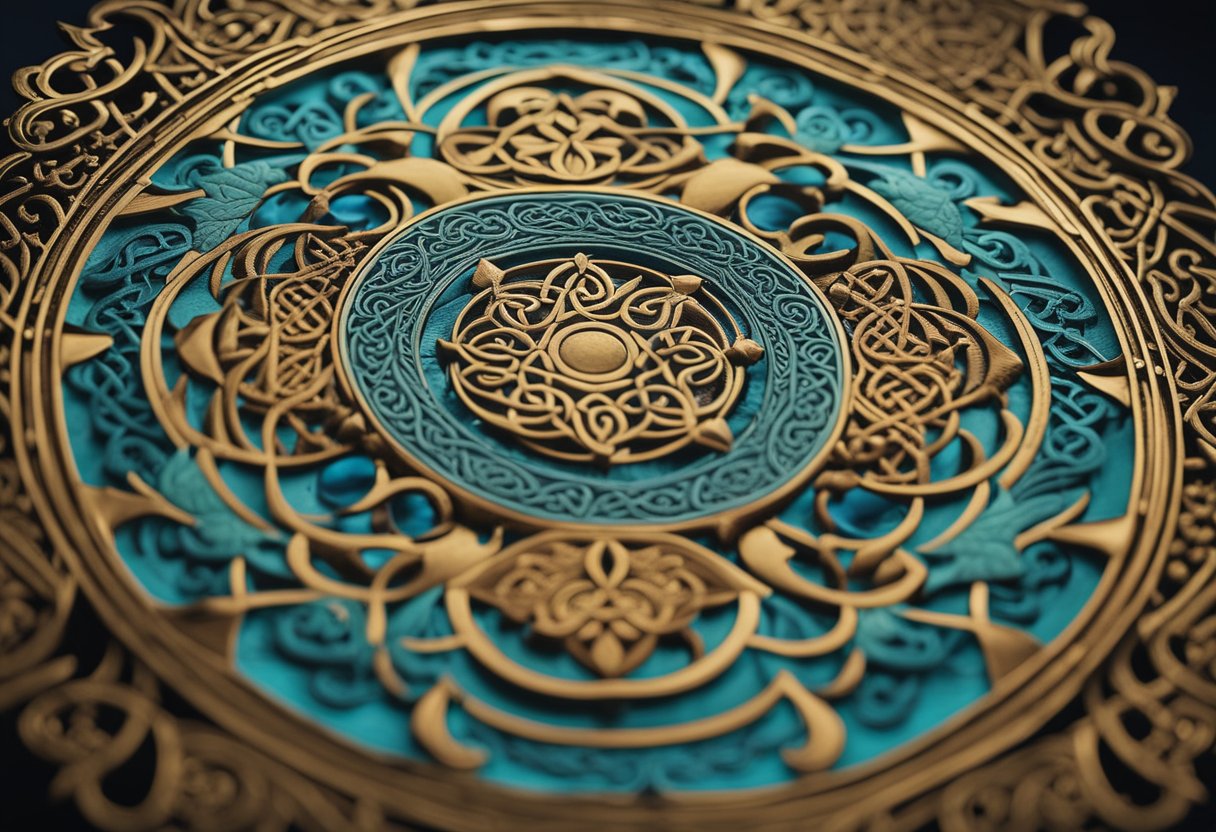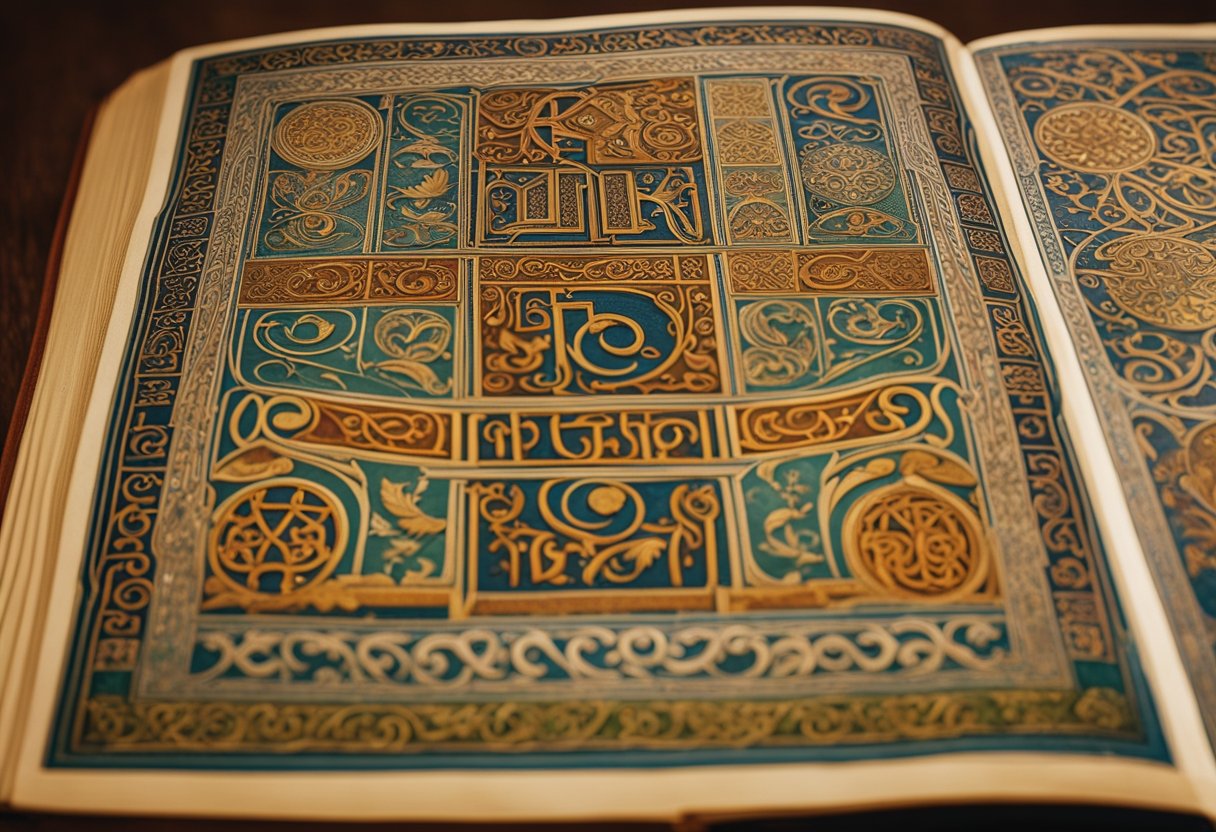The Book of Kells: Unveiling Its Enigmatic Symbolism and Masterful Artistry

Updated On: March 20, 2024 by Ciaran Connolly
The Book of Kells stands as a towering achievement in medieval art, housed in the Trinity College Library in Dublin. Known for its rich illustrations, intricate designs, and profound symbolism, this masterpiece traces back to a time when monastic scribes dedicated their lives to the meticulous craft of manuscript illumination. As we uncover the layers of meaning woven into the pages of this celebrated piece of Irish heritage, each turn of the parchment brings us closer to the spiritual and cultural world of early medieval Ireland.

Table of Contents
Ireland’s National Treasure
Ireland’s cherished national treasure, The Book of Kells, represents a pinnacle of Insular art—a style that emerged from the British Isles between the 6th and 9th centuries. The meticulous work, often attributed to the monks of the Columban monasteries, excels not only in its visual narrative but also in its capacity to embody the balance between tradition and innovation. With each pattern, symbol, and script, the book offers us an enigmatic glimpse into the confluence of Christian imagery and Celtic lore.
Historical Context

The Book of Kells occupies a profound place in history, with its monastic origins deeply rooted in the rich tapestry of early medieval Christianity and its artistic splendour reflecting the intricate work of skilled scribes and illuminators. Its journey from a remote island monastery to its current home at Trinity College, Dublin, encapsulates a saga of artistic creation, cultural resilience, and historical significance.
Monastic Origins
The creation of the Book of Kells can be traced back to the Columban monasteries in Iona, founded by St. Columba in the 6th Century. The text exemplifies the collaborative effort of a monastic community dedicated to religious scholarship and artistry.
Journey From Iona to Kells
After numerous Viking Raids, the monastery at Iona relocated to Kells, County Meath, where the manuscript was either transferred for safekeeping or possibly completed at the Abbey of Kells in the 9th Century.
Resilience Through the Ages
The Annals of Ulster record a Viking Raid on the abbey in 1006, referring to the manuscript as “the most precious object of the Western world.” Despite such challenges, the manuscript survived largely intact through the Medieval period.
The Art of Illumination
The Book of Kells is a masterpiece of medieval art, particularly its Illuminated Manuscript, which was created with vibrant colours on vellum. Each page displays the meticulous work of scribes within a scriptorium.
Celtic and Insular Art Influence
Incorporating intricate Celtic Designs and the style of Insular Art, the manuscript is heavily influenced by native Irish and Pictish traditions, blended with influences from other Columban Monasteries throughout Scotland and England.
The Text of the Manuscript
The handwritten Latin text includes the four Gospels—Matthew, Mark, Luke, and John—combined with preliminary texts, including canon tables, concordances of Gospel narratives, summaries, and other didactic matters.
Iconography Within
Christian Iconography plays a central role, with symbolic creatures and intricate patterns framing text and forming full-page decorations. Among the most prominent is the Chi Rho page, marking the beginning of Matthew’s account of the life of Christ.
Understanding The Imagery
The symbolism and iconography in the manuscript are subject to ongoing study and interpretation, with scholars like Bernard Meehan providing invaluable commentary on its numerous illustrations and miniatures.
Cultural and Religious Significance
The Book of Kells remains a symbol of Irish cultural identity, embodying the intersection of belief, art, and history that defined the Island’s early Christian era and the broader landscape of Medieval Ireland.
Kells in Modern Times
By the 17th century, the manuscript found its home at Trinity College Dublin, becoming one of Ireland’s greatest cultural treasures and a must-see for visitors exploring Ireland’s rich heritage.
Exploring the Manuscript Today
Visitors can observe the historic manuscript up close at Trinity College, with opportunities to view facsimiles and learn about its construction, history, and significance in the college’s exhibition space.
Reflective Conclusion
The Book of Kells stands as a testament to the talent and devotion of its creators—and as an enduring link to Ireland’s foundational Christian heritage, inspiring generations to reflect upon its profound historical and cultural legacy.
In-Depth Exploration
The Making of a Masterpiece
The creation of the Book of Kells was an arduous process. The preparation of the vellum, made from calfskin, required immense skill and patience. The scribes then painstakingly transcribed the text and illuminated the pages with intricate designs using natural pigments and gold leaf.
Understanding the Script and Language
The Book of Kells is written in Latin, using a script known as “Insular Majuscule.” This script is notable for its elaborate and ornate letters, often making the text challenging to read. The language and script reflect the scholarly and religious context of its creation.
The Imagery: A Fusion of Cultures
The imagery in the Book of Kells is a fascinating amalgamation of Christian and pagan symbols. This fusion reflects the cultural and religious transition in Ireland during the early Middle Ages, from pagan traditions to Christianity.
The Book’s Journey Over Centuries
The history of the Book of Kells after its completion is as fascinating as its creation. It survived the turbulence of medieval Europe, including Viking raids and religious reforms. The book’s journey to Trinity College in the 17th century was a significant event, ensuring its preservation for future generations.
Modern Analysis and Conservation
Today, the Book of Kells undergoes continuous analysis and conservation efforts. Advances in technology allow for more detailed study of its materials, techniques, and history, shedding new light on this ancient masterpiece.
Impact on Modern Art and Culture
The Book of Kells has influenced modern art and culture, inspiring artists, writers, and filmmakers. Its distinct style is seen in various contemporary artworks, and it remains a symbol of Irish identity and heritage.
Educational Value
The Book of Kells is also an important educational resource. It provides insight into medieval life, art, religion, and history. Its presence in Trinity College serves not just as a tourist attraction but also as a scholarly resource for students and academics worldwide.
Frequently Asked Questions

In addressing these common inquiries, we aim to shed light on the Book of Kells’ historical and cultural significance.
Why is the Book of Kells recognised as significant?
The Book of Kells is deemed significant due to its remarkable craftsmanship as a masterwork of Insular art, which encompasses some of Medieval Europe’s most intricate and ornate illustrations and calligraphy. It exemplifies the sophisticated artistic abilities and meticulous attention to detail of Irish monks from centuries past.
What does the Book of Kells’ intricate symbolism represent?
The intricate symbolism in the Book of Kells often reflects Christian iconography, with complex imagery that may serve to convey religious themes drawn from the four Gospels. Each illustration is rich with meaning, sometimes understood only through learned interpretation.
Where is the Book of Kells currently housed for viewing?
The Book of Kells is currently housed for public viewing at the Trinity College Library in Dublin, where it remains one of Ireland’s most lauded treasures and an enduring attraction.
Which artistic style is evident in the Book of Kells’ illustrations?
The illustrations of the Book of Kells are renowned for their Insular style, characterised by intricately interwoven patterns, vibrant colours, and the fusion of Christian and Celtic imagery.
What icons and motifs are recurrent in the Book of Kells?
Recurrent icons and motifs in the Book of Kells include elaborately interlaced animals, figures from Christian iconography such as the Virgin Mary and Christ, and complex geometric patterns, all demonstrating the text’s deep religious significance and the artistry of the illuminators.
What is the estimated value of the Book of Kells today?
The Book of Kells’ estimated value today is incalculable, reflecting its immense cultural, artistic, and historical importance, as well as its status as an Irish national treasure.






